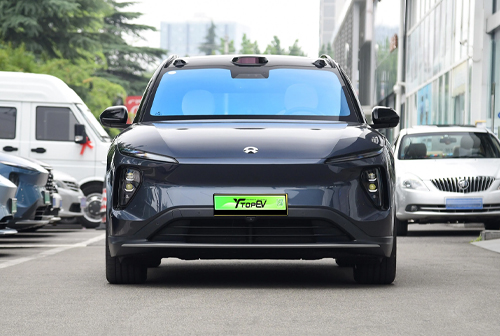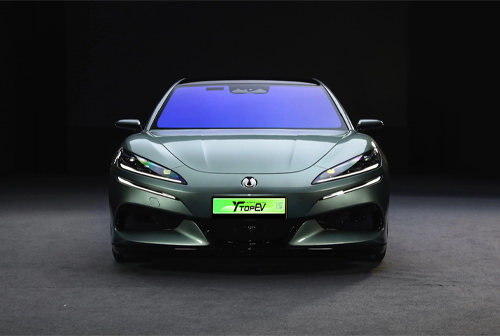Holding high the banner of "Intelligent Driving Equalization", BYD has made the industry prediction that "2025 will be even more competitive" a reality. It has forcefully opened the door of the "No.1 Intelligent Driving Store" and once again thrown its "trump card" into the automotive market.
On February 10th,
BYD announced the launch of 21 intelligent driving models in one go, stating that the latest "God’s Eye" driving assistance system will be available across the entire vehicle lineup. From the
Yangwang U8 priced at over a hundred thousand dollars to the
Seagull intelligent driving version priced at $10,000, the high - speed NOA (Navigate on Autopilot) function comes as a standard feature.
In the past two years, the expensive lidar has been the entry ticket for intelligent driving. Automakers, like philatelic enthusiasts, have been competing in the number of sensors, making intelligent driving a high - end luxury item out of reach.
Many automakers have tried to lower the threshold of intelligent driving with a more cost - effective pure - vision solution, but their efforts are not as impactful as BYD's this time.
The high - end technologies that were carefully packaged as luxury goods by competitors have been placed on the shelves of budget supermarkets by BYD.
With its pure - vision solution and self - developed chips, BYD has woven a larger cost - control net, fishing out high - level functions such as high - speed navigation and valet parking and spreading them across the vast market of $10,000 - priced vehicles. Just as Apple made the touch - screen a standard feature back then, causing Nokia's keyboard empire to collapse, BYD is now replicating this script, except that the stage has shifted to four - wheeled intelligent terminals.
Through its self - developed BEV + Transformer algorithm architecture, BYD has broken away from its reliance on high - definition maps, supporting navigation on urban roads without maps. At the same time, it adopts a low - cost hardware solution of "three - eye cameras + 4D millimeter - wave radar", which can reduce costs by up to 60% compared to the industry average.
BYD's self - developed "Xuanji Architecture" has for the first time achieved a dual - cycle synergy between cloud - based AI and vehicle - end AI. Through the three communication layers of vehicle networking, 5G, and satellite networks, it can optimize the intelligent cockpit, intelligent driving, and chassis control in real - time. This architecture opens up 142 vehicle control interfaces, allowing third - party developers to call intelligent driving perception data and build an automotive ecosystem similar to Android.
In addition, BYD has cooperated with Huawei Cloud to build an EB - level data storage cluster, processing 1.2PB of data daily. Combined with the DeepSeek large - model, it optimizes the vehicle - end AI reasoning ability, achieving fuzzy recognition of driving intentions and prediction of dynamic obstacles.
The divergence in technology routes is being flattened by the scale effect. In the past five years, the debate over technology routes in the field of intelligent driving among automakers has never ceased: the confrontation between the pure - vision camp and the multi - sensor fusion camp, the game between self - developed algorithms and supplier solutions, and the route dispute between single - vehicle intelligence and vehicle - road collaboration are essentially choices of survival strategies under different resource endowments.
BYD has directly stepped out of the above - mentioned context. BYD's "God's eye" system seemingly modestly adopts a combination of three - eye cameras + 4D millimeter - wave radar, but it has achieved extreme cost control. Compared with the lidar solutions that new automakers are proud of, its hardware cost has dropped sharply from $3,000 to $400, equivalent to creating an iPhone - like imaging system at the price of a
Xiaomi phone.
A more subtle trick lies in the data. Thanks to its annual sales of over 4 million vehicles, BYD ingests 12 million kilometers of real - world road condition data every day. These "electronic feeds" are nurturing AI models, evolving rule - driven algorithms to develop driving intuitions close to those of humans.
This strategy of "exchanging scale for accuracy" is rewriting the direction of industry technological evolution. When a certain automaker can increase the scene pass - rate of the pure - vision solution to 98% through a data loop, the "safety redundancy" value of lidar will have to face the scrutiny of cost - effectiveness.
BYD's low - cost solution of three - eye cameras + 4D radar is likely to become the new benchmark for intelligent driving in vehicles priced between $10,000 - $20,000, forcing
Tesla,
Xpeng, etc. to adjust their hardware strategies. The downward penetration of its high - speed NOA to the price range below $10,000 will directly impact the entry - level fuel - vehicle market.
The downward penetration speed of intelligent driving functions far exceeds industry predictions. According to an industry report, the intelligent driving installation rate of vehicles priced between $10,000 - $15,000 such as
BYD Seagull and
Wuling Xingguang is expected to exceed 60% in the first quarter of 2025. This change directly impacts the traditional market - stratification logic. Once the intelligent driving threshold of $20,000 is broken through, consumers begin to classify product levels based on the completeness of the intelligent experience rather than the price range.
Although it is impossible for BYD to leap from an unknown player in intelligent driving to the first echelon of the industry with just one press conference, the algorithms trained by its scale advantage will form a snowball - like advantage in iterative capabilities, and it is foreseeable that it will catch up with some small and medium - sized automakers in the short term.
However, another possibility cannot be ruled out. If the unit price of lidar drops below $200, the multi - sensor fusion solution may stage a comeback. Kaiyuan Securities pointed out in a research report released at the end of December 2024 that the key to the accelerated penetration of intelligent driving lies in cost reduction. The hardware cost of intelligent driving vehicles should be reduced by 20% - 30% year - on - year. In December last year, an executive of Pony.ai revealed to the outside world that the kit cost of Pony.ai's upcoming 7th - generation robotaxi will be reduced by about 30% - 40% compared to the 6th - generation.
On the other hand, industry experts believe that the cost reduction of intelligent driving achieved due to the increase in self - development may marginalize some traditional Tier 1 suppliers. Zheng Liyao, the head of the GaoGong Intelligent Automobile Research Institute, pointed out that BYD's supply chain system with a self - development proportion as high as 58% has made "Bosch's engineers now spend more and more time in meetings analyzing and disassembling BYD's domain controllers in their PPTs".
Analysts from Huatai Securities interpret it from a capital perspective, believing that BYD's scale effect is rewriting the valuation logic of intelligent driving. "When the proportion of intelligent driving hardware costs drops from 25% to 18%, the capital market's evaluation criteria for automakers will shift from 'technological leadership' to 'data monetization efficiency'."
Regardless of the technological path, BYD's "universal intelligent driving" strategy forces technological equalization through scale. The competitive barriers it has built through large - scale manufacturing, domestic substitution, and data loops are pushing intelligent driving from a "technology showcase" to a "livelihood project". The ultimate goal of this transformation is to make intelligent driving, like ABS and ESP, a basic function of automobiles.

.jpg)
.jpg)
.jpg)
.jpg)


.jpg)
.jpg)
.jpg)
.jpg)



